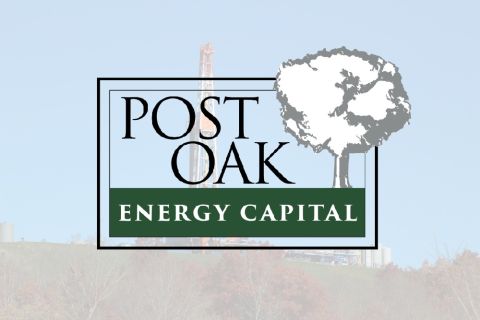Jordan Blum, editorial director, Hart Energy: How does the energy sector solve its workforce challenges?
We're here at the annual Kate Bailey Hutchison Energy Symposium in Austin to find out. I'm joined by Shane Young, the executive vice president and CFO at Coterra Energy for this Hart Energy Live Exclusive interview.
So, Shane, why is it important for you to be involved with the energy center and this symposium today?
Shane Young, CFO, Coterra Energy: That's great. Well, thank you for asking. Thank you for having me here today. Look when the senator approached me about being a part of the center back in 2016, I was very excited about her vision, which was to turn this into the preeminent energy center in the country, really delivering information to not just alumni in the industry, but also students as well. It was probably the student element that was the biggest hook for me to getting involved in the center's activities.
JB: Very good. So how important is it for the university, the energy center and really all of higher education for helping fill the energy industry's workforce needs and solving all the challenges we're facing with the so-called great crew change.
SY: Yeah, it's critical, I mean, you know, recruiting is the lifeblood of the energy industry. And I would say, the problems that are going to face the industry a decade from now and two decades from now aren't going to be solved by me. They're going to be solved by people that are in the schools and in the classrooms today. So, it's critical to bring the best minds to the industry.
JB: What do you see as the biggest challenges right now? And how do you see the energy center getting more involved in helping getting more of the colleges here involved? I know the College of Engineering just partnered as well.
SY: Yeah, I look, I think it’s really messaging and engagement and, you know, I think our student populations, if they're getting all their information from one source, then it's probably an incomplete set of information. I think we're trying to provide balance and really tell the story of the energy industry and the energy evolution and how that's going to evolve over time.
JB: Do you see the challenge of convincing young people to sign up for the energy sector evolving? Is it improving, or how do you see that playing out from here?
SY: You know, it's interesting, the more we're able to engage with students, the more interest and the more energy that comes back our way. And I would say, this year we're going to have well over 100 students at the conference. And that's a number that's grown every single year. So, the more our programming over the course of the year has an opportunity to get in front of students, tell them the story of the energy industry, where it's going, what the strengths are, the more, students that we have involved iin events like this at the symposium.
JB: What are the jobs you need to fill most importantly right now?
SY: you know, all the jobs are important. I mean, if we go to the field, that that's an important place to fill jobs, have the best people. If we go into the corporate offices, whether it's in finance and legal accounting, it's critical to have the best people in those jobs. I think for me, you know, this historically has been very much an industry of booms and busts over multi decades. And I think the discipline that the industry is exercising today, one of the benefits of that is shareholders want that and demand it. The other is, I think it's going to smooth some of those cycles and make it easier to recruit into our industry.
JB: So speaking of booming, the Permian Basin is obviously booming in both West Texas and New Mexico. We're at record high production levels now. Do you see those volumes continuing to steadily rise for the foreseeable future?
SY: For the foreseeable future I do. We're continuing to see continued efficiencies in drilling and in productivity in the wells that are being drilled in the Permian. The Permian has got the best rock. As our honoree last night talked about, if you pulled West Texas and New Mexico out on its own, it'll be the third or fourth largest producing nation on the planet, and I see that continuing on into the future as we continue to develop that basin. We're seeing new formations and new opportunities every year as we continue to progress our knowledge of the Permian.
JB: Now, it had been just a few years ago in vogue, I guess to have that kind of pure play single basin focus, whether it's the Permian or elsewhere. It seems like kind of the multi-basin strategy is taking over more and more now. Do you see that as the best path forward?
SY: I really do. I think, as we look at capital allocation, we have a very simple approach, but the approach is, let's allocate capital that delivers great returns at mid-cycle pricing. Then let's take that program, stress test it for downside pricing cases. And then, the third element of that is, let's look at what are the on ramps and off ramps as we go through the year in that capital program. And we want the ability to, if market signals change in various commodity prices, to be able to have off ramps in some basins and on ramps into other basins that'll help keep consistency and deliver consistent profitable growth in our business.
JB: Great. That makes a lot of sense, and thank you so much for joining us here at the KBH Energy Center for this Hart Energy Live Exclusive interview. To read and watch more, please visit online at hartenergy.com.
Recommended Reading
Post Oak Backs Third E&P: Tiburon Captures Liquids-rich Utica Deal
2024-10-15 - Since September, Post Oak Energy Capital has backed new portfolio companies in the Permian Basin and Haynesville Shale and made an equity commitment to Utica Shale E&P Tiburon Oil & Gas Partners.
E&P Consolidation Ripples Through Energy Finance Providers
2024-11-29 - Panel: The pool of financial companies catering to oil and gas companies has shrunk along with the number of E&Ps.
Energy Sector Sees Dramatic Increase in Private Equity Funding
2024-11-21 - In a 10-day period, private equity firms announced almost $20 billion in energy funding. Is an end in sight for the fossil fuel capital drought?
EnCap Closes $6.4B for E&P Fund, Including Co-investments
2024-10-21 - EnCap’s Fund XII raised $5.25 billion for work in U.S. oil and gas basins. Coupled with its energy transition and midstream funds, the private equity firm has collectively raised $9 billion this year.
Companies Take Advantage of ABSs to Finance Acquisitions
2024-10-17 - Some companies have taken advantage of asset-backed securitizations to monetize some of their cash flows and better position themselves for a sale.
Comments
Add new comment
This conversation is moderated according to Hart Energy community rules. Please read the rules before joining the discussion. If you’re experiencing any technical problems, please contact our customer care team.





